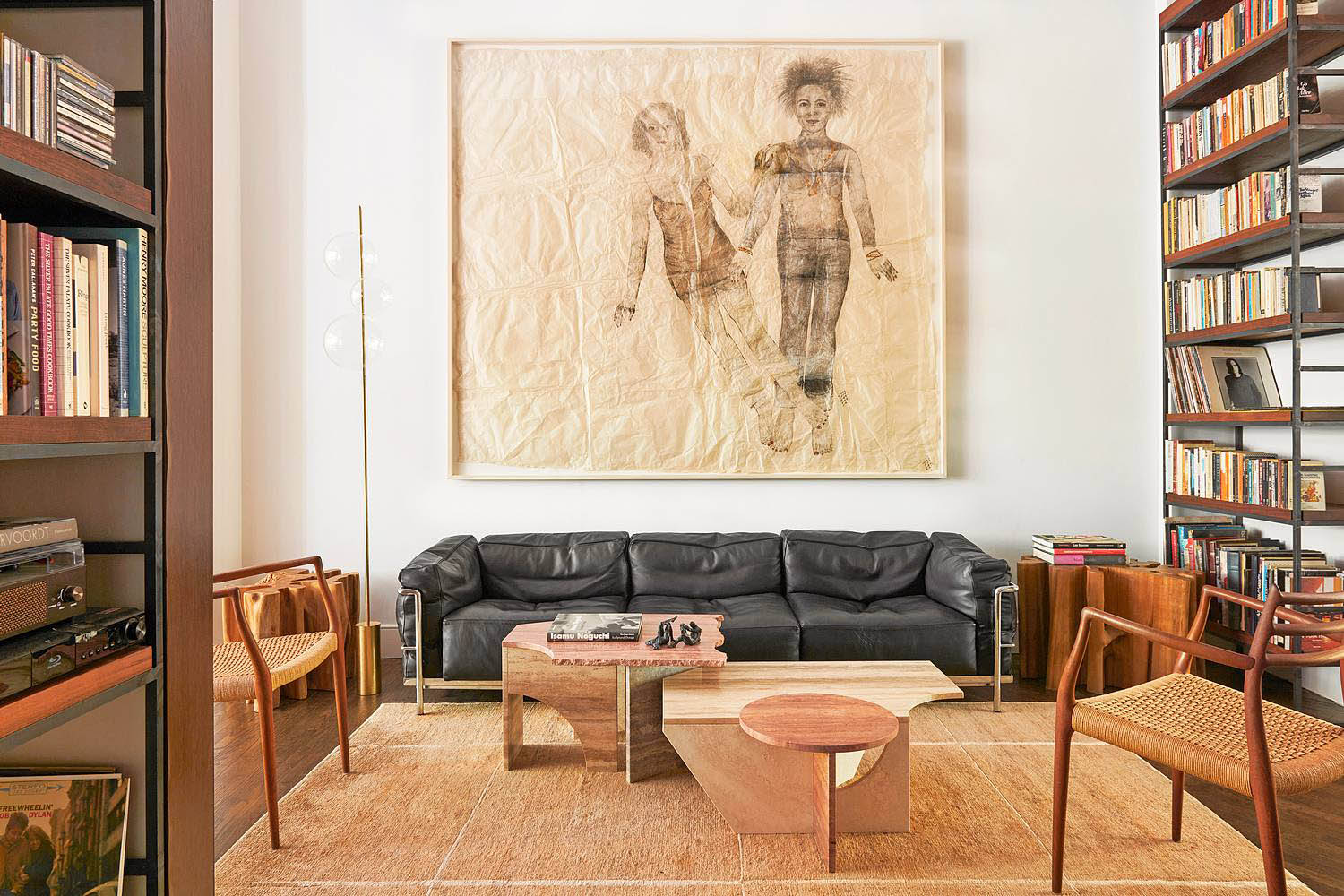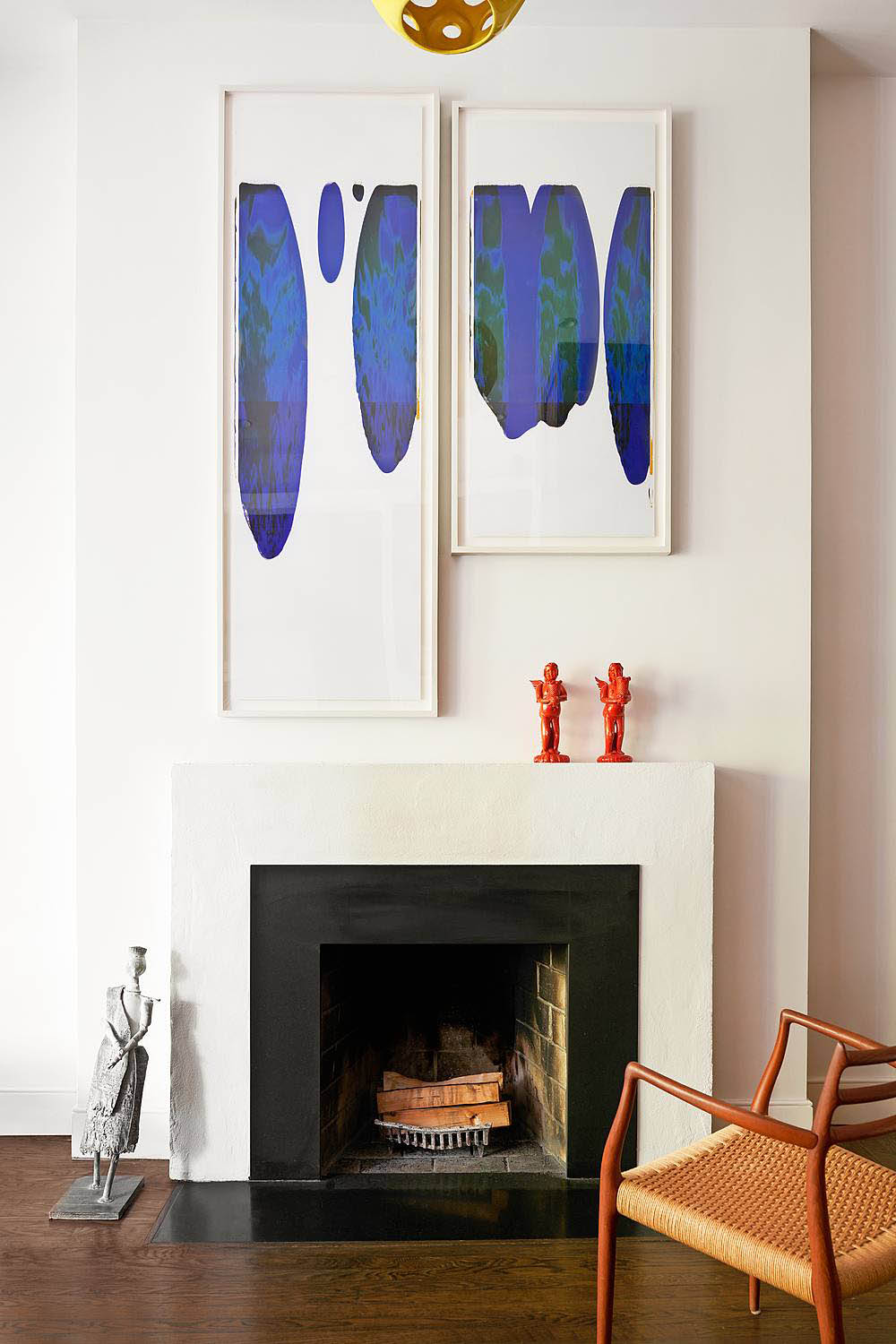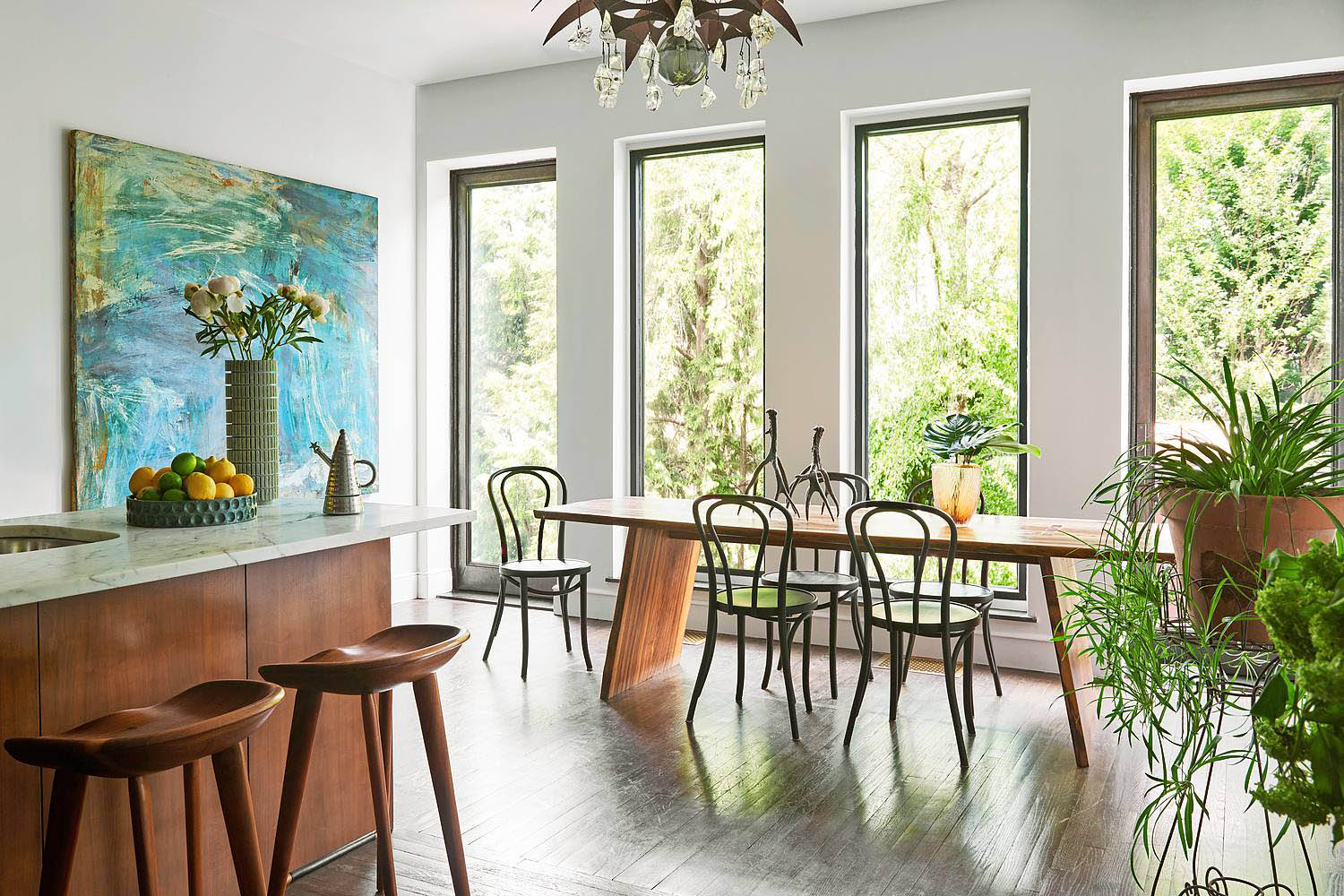Photographs by Valentina Sommariva
“Brooklyn in the 1980s was dicey,” recalls Italian jewellery designer Ippolita Rostagno, now a confirmed Park Slope resident. Perhaps especially so for a trained sculptor who grew up in the Tuscan hills just outside Florence, and whose childhood influences included horse-riding and her mother’s love of Renaissance art.
When Rostagno first moved to the US in 1982, she lived in Los Angeles. At 18 she dreamed of a career in dance, and she did eventually found an explorative dance company, but, she says, “There wasn’t much of a cultural scene in Los Angeles and I thought that New York was a place that could offer more opportunities.”
By the time she moved to Manhattan four years later, her creative focus had shifted from dance to 18ct gold, and in 1999 she founded her jewellery line, Ippolita. Bergdorf Goodman scooped up her first designs. But by then, the city had become too overwhelming for her.
“My best friend had recently moved to Brooklyn, a part of New York I had never visited before,” she says. “When I crossed over Manhattan Bridge, all the din seemed to fade away.”
Less dicey these days, Brooklyn is now both peaceful and hip, gentrified yet still energised. There are boutiques, warehouse galleries, record shops and farm-to-table coffee roasters. This rich cultural mix is reflected in the diverse artworks in the late 19th-century brownstone house which Rostagno shares with her family in Park Slope, a smart tree-lined neighbourhood a short walk from the coveted green of Prospect Park.

Many of the pieces in her house come from Artemest, the Italian furniture and crafts online outlet which she founded in 2015 with Italian entrepreneur Marco Credendino. “Having access to the pieces on Artemest is a problem,” she laughs, “because there are so many beautiful things. Plus, if I change something, then I have to change all the rest of the furniture.”
She was renting in Park Slope back in 2005 when an apartment in the house across the street came up for sale. “The property offered an outdoor area and it seemed like the perfect fit for me and my teenage daughter,” she says. “My neighbour was going through a divorce and wanted to stay in the building, so she offered to sell me half of her four-storey house.” Rostagno snapped it up.
At first there was trouble in Park Slope paradise. Floors in these generously proportioned, tall and narrow, three or four-floor terraced houses don’t lend themselves to being partitioned off to create new rooms. A typical mid-terrace New York brownstone receives light from both the front and rear.
“If you start dividing these spaces into rooms,” she explains, “you lose that light. They’re really beautiful if you can keep the spaces open, which is why having multiple floors is key.”

It turned out that the new apartment had been modified several times over the years, and had been stripped of most of its period features in the process.
“I heard that in the 1950s it had been tenanted with smaller rooms,” Rostagno says.
There was a freedom in that at least, and so, with no stylistic constraints to hold her back, she chose a contemporary finish for the interior spaces, introducing Venetian plaster on the walls to serve as the background for her art collection. Downstairs, she extended into the garden, creating a space that now serves as a playroom for her eight-year-old son.
A few years later, the same neighbour offered to sell Rostagno her own apartment too. “It felt like the perfect opportunity,” she says. “But to align the space with my own vision, I had to embark on another renovation.”
This time, she removed any remaining period features, including the so-called “coffin corners”, small alcoves said to have been designed to make room for coffins being carried down narrow staircases to the parlour for viewing.
Working on the new renovations with EOA/Elmslie Osler Architect, whose projects include retail spaces such as Anthropologie, Rostagno’s team stripped everything back to the brick. One unexpected discovery was a row of distinctive brickwork arches embedded into the side walls and passing through the party walls, connecting with the neighbouring houses. They offered a glimpse of the past which inspired Rostagno as she continued to shape her vision for the space’s future.
Other surprises were less poetic. When Rostagno decided to update the stairwell with a new steel and wood staircase, the floor above collapsed. “I was living there at the time, which was a big mistake,” she says. “They had to rebuild the joists, but we salvaged one of the original ones and turned it into a shelf in my bedroom, under the mirror near the fireplace.”
The new staircase runs through the heart of the house, allowing the lower levels to be flooded with light.
Rostagno moved the kitchen up from the ground floor to make it a space that “feels comfortable enough for everyone to hang out”. Friends and family gather around the table she designed herself or perch at the bar on BassamFellows Tractor stools. Four tall windows overlook a mature garden; the intention is for guests to feel they are dining amid the trees, just as Rostagno did as a child.

Light fills this space, which flows into the living area, dominated by a portrait of Rostagno and her daughter Maya by contemporary American artist Kiki Smith. “I love it,” she says, “because it reminds me of the hard road women have to travel to discover themselves. All of the art I collect is driven by emotion and is very personal.” Some of these pieces find their way into Artemest Galleria, the gallery and shop that she opened in Manhattan’s West Village in 2022.
Over the years Rostagno, a self-described “craft maniac”, has carefully curated each space, establishing a home that is both comfortable and uncluttered. “It’s a constant balance between functionality and aesthetics,” she says. Her third-floor master suite is an exercise in restraint, enlivened by flourishes of Italian craftmanship. A Murano glass chandelier by Venetian glass-smith Striulli Vetri D’Arte hangs above the Titian-blue bedcovers, at the foot of which sits a sculptural Gaudenzio armchair in walnut by Giuseppe Rivadossi.
Keeping watch is a monumental round mirror called Frutta d’oro, carved by Fiorentine master craftsman Daniele Nencioni. The inspiration was the ornately carved frame for Michelangelo’s Tondo Doni. “Nencioni received permission from the Uffizi,” she says, “back when it was closed on Mondays, to create a clay model of Michelangelo’s frames. He spent years meticulously carving replicas back at his studio.”
Rostagno’s favourite space in the whole house is her studio on the top floor. A set of rooflights fills it with natural light.
“The shafts are deep and positioned at an angle where you look up and only see the sky. It looks like a painting,” she says, the great artworks of Florence always in mind.
